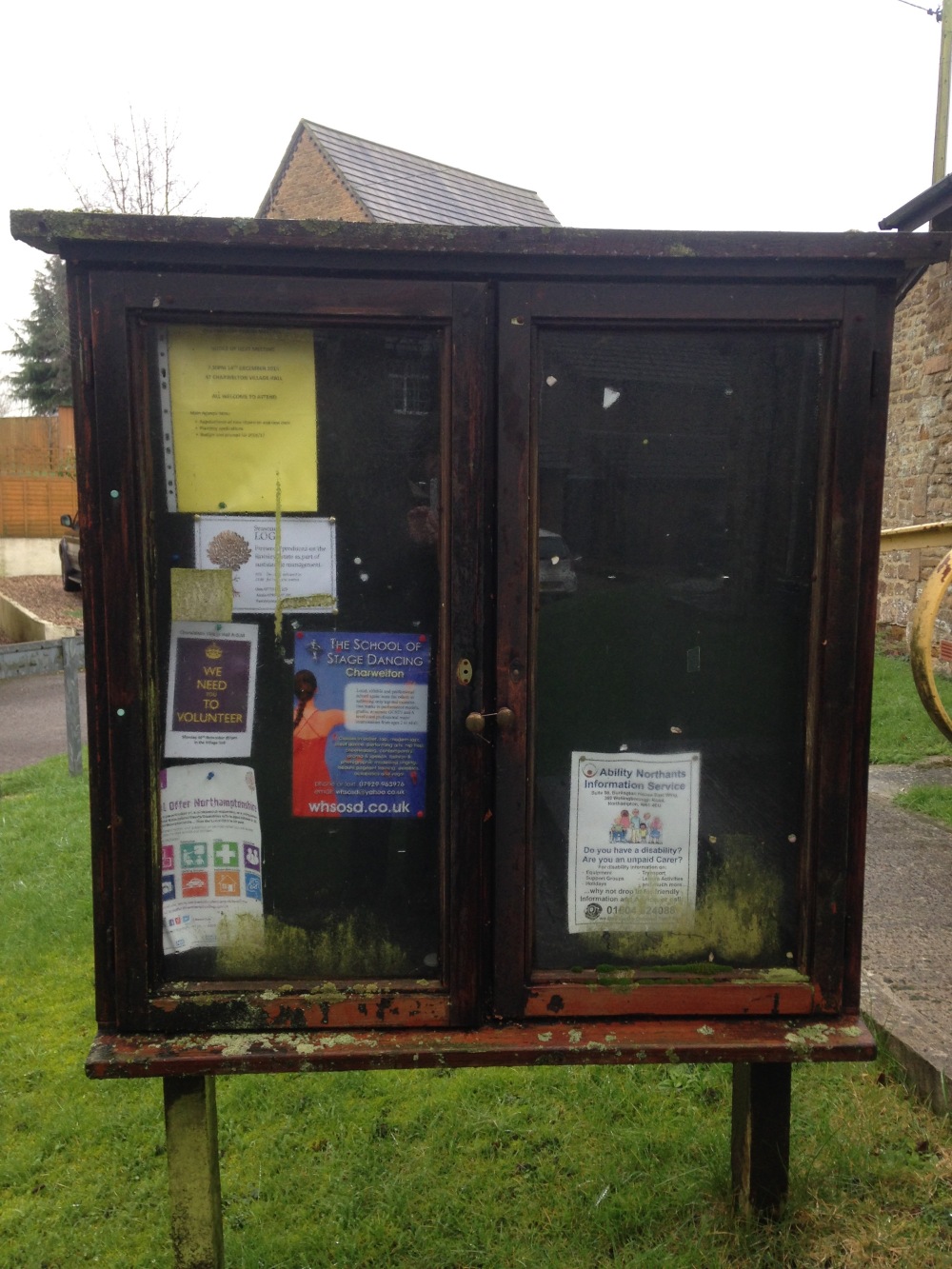
First research led to searching out and recording the village notice board. This time the board was situated just outside the village hall. Originally a cottage, the village website claims that the hall was donated by The Knightley’s of Fawsley to the residents of Charwelton in 1922 as a place to meet and socialise. Lady Knightly of Fawsley was lady-in-waiting to The Duchess of Albany who died in 1922 which may have initiated the donation?
The Duchess, originally Helena Princess of Waldeck-Pyrmont, married Queen Victoria’s youngest son in 1881. Tragically Leopold died in 1884 and left Helena a widow at the age of 23. Reading about Helena I have come to understand that The Duchess had a strong sense of duty and a genuine love for her charity work which led her to work closely with hospitals, sponsor auctions and raise funds, until her death. In 1894 she established The Deptford Fund to assist in finding alternate employment for women who worked in the cattle slaughtering trade which at the time was a dangerous occupation. Allegedly Queen Victoria grew to respect her daughter-in-law after the death of Prince Leopold as she had the courage to stand up to her! One example of this was The Duchess disagreeing with the Queen’s original choice of lady-in-waiting and imploring with her face-to-face to choose her own attendants which Queen Victoria relented to!
The Duchess travelled by rail to Charwelton station to visit Lady Knightley, her lady-in-waiting, in 1905. Children of Charwelton assembled on the platform of the station in their best clothes with flags and flowers to welcome her.
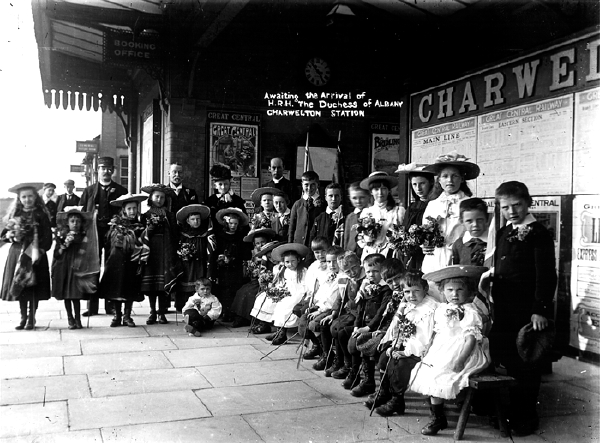
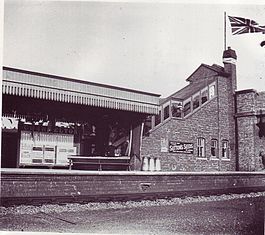
The station at Charwelton opened in 1899 and closed in 1963! It is no longer visible and has been completely demolished apart from Bridge 491 – a small metal bridge which once carried a minor road across the railway line. The station was part of the Great Central Railway and included a goods yard and extensive sidings to cater for the ironstone quarries. At it’s peak there were often more than 200 wagons stabled in the goods yard!
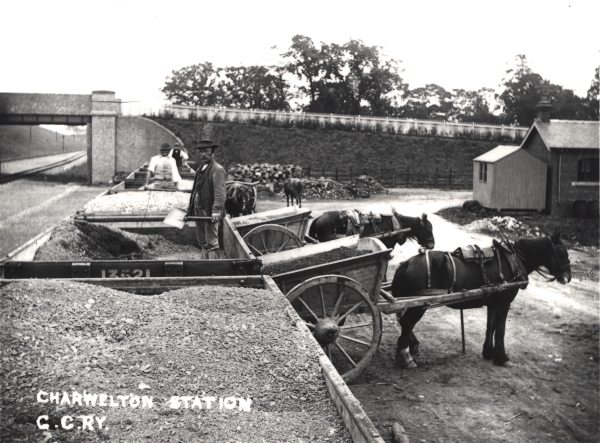
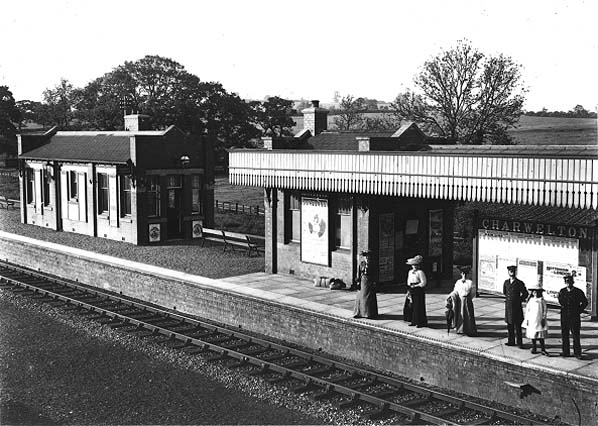
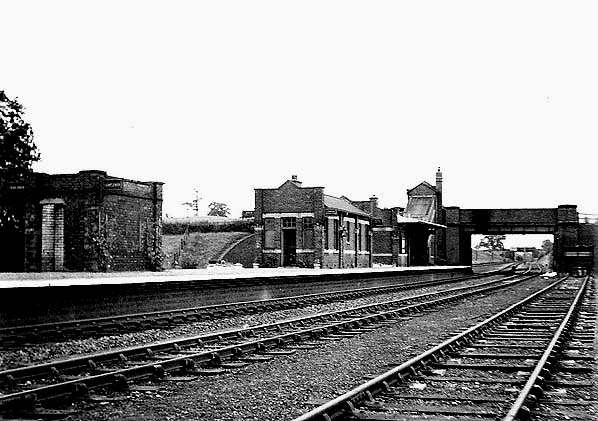

The village hall website provided further information to the origins of Charwelton including reference to the village name being derived from the river Cherwell which used to rise from the arched cellar of an old farm house in the village! British History online provided references to prehistoric, medieval and more recent times alongside a series of beautiful maps which seem to echo the decorative patterning of the railway lines and may provide the style of visual imagery to represent the village.





Wonderful photographic research T – and the first royal connection I think(?). I am amazed that almost every small village in the north section had a railway station, unheard of today of course – and I’m guessing that Charwelton was another victim of the Beeching Report and subsequent restructuring of the railways. I have highlighted a railway station at Harringworth and it’s station master William Gale; in 1947 it was used by an average of 15 passengers a day, bringing in revenue of £101 – it was closed a year later resulting in an estimated annual saving of £909!
LikeLiked by 1 person
Very interesting that we have researched independently but found so many similar references and interesting stories – are we drawn in some say to a ‘type’ of story ?
LikeLike
You could be right! It could also be that although we haven’t selected a specific time period access to photographs and the census has led us quite naturally to early 20th century, and subsequently the self-sufficient nature of the villages in terms of trade and industry.
LikeLike